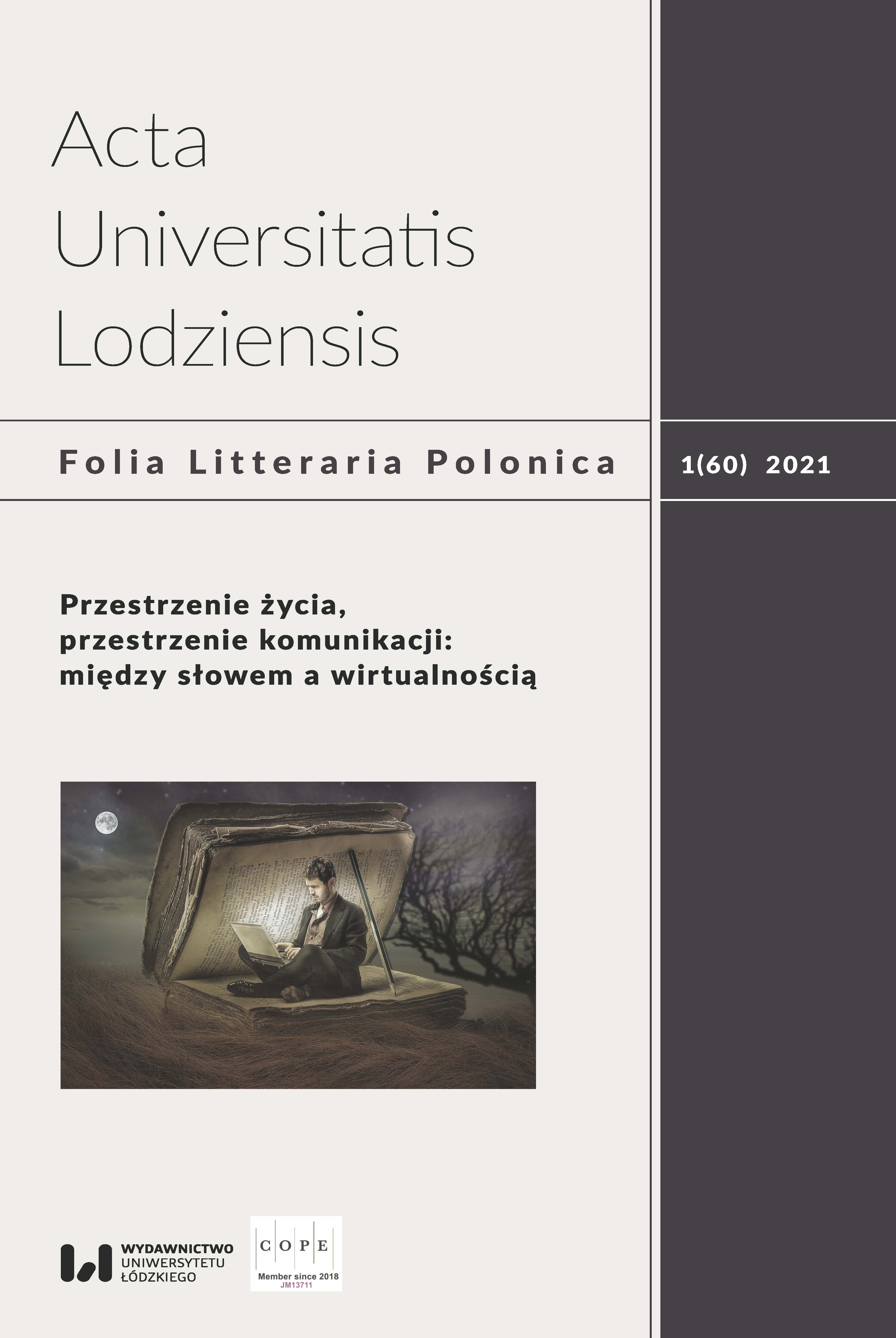System VR – nowa przestrzeń komunikacyjna
DOI:
https://doi.org/10.18778/1505-9057.60.06Słowa kluczowe:
rzeczywistość wirtualna, komunikacja, rozrywka, edukacja, reklamaAbstrakt
Artykuł opisuje obszary komunikacji międzyludzkiej, w których swoją obecność coraz silniej zaznacza technologia Virtual Reality. Analiza materiału badawczego pokazuje, że system VR sprawdził się w branży rozrywkowej, jest wykorzystywany w różnorodnych procesach edukacyjnych i można na nim oprzeć strategię promocji marki. Dostęp do rzeczywistości wirtualnej wciąż jest ograniczony ze względu na wysokie ceny gogli VR, ale wiele polskich i zagranicznych firm już dzisiaj dostrzega ogromny potencjał tej technologii i nie boi się w nią inwestować. Sposób komunikacji międzyludzkiej zawsze ma pewne podłoże pokoleniowe i być może kluczowym narzędziem komunikacyjnym dla kolejnych pokoleń stanie się właśnie Virtual Reality.
Pobrania
Bibliografia
Baudrillard Jean, Symulakry i symulacja, przeł. Sławomir Królak, Wydawnictwo Sic!, Warszawa 2005.
Google Scholar
Boellstorff Tom, Dojrzewanie w Second Life. Antropologia człowieka wirtualnego, Wydawnictwo UJ, Kraków 2012.
Google Scholar
Bomba Radosław, Gry komputerowe w perspektywie antropologii codzienności, Wydawnictwo Adam Marszałek, Toruń 2014.
Google Scholar
Discovery Vr, http://www.discoveryvr.com [dostęp 21.04.2018].
Google Scholar
IKEA VR Experience, http://store.steampowered.com/app/447270/IKEA_VR_Experience/ [dostęp 21.04.2018].
Google Scholar
King Tut Vr, http://www.eonreality.com/portfolio-items/king-tut/ [dostęp 21.04.2018].
Google Scholar
Kubiński Piotr, Gry wideo. Zarys poetyki, Wydawnictwo „Universitas”, Kraków 2016.
Google Scholar
Lisowska-Magdziarz Małgorzata, Metodologia badań nad mediami – nurty, kierunki, koncepcje, nowe wyzwania, „Studia Medioznawcze” 2013, nr 2, s. 27–42.
Google Scholar
Machkovech Sam, Learning how to VR with Tilt Brush, HTC Vive’s killer app, https://arstechnica.com/gaming/2016/04/learning-how-to-vr-with-tilt-brush-htc-vives-killer-app/ [dostęp 21.04.2018].
Google Scholar
Piechota Magdalena, Strategie edutainment a sytuacja komunikacyjna, w: Nowe zjawiska w języku, tekście i komunikacji III. Kontekst a komunikacja, red. Iza Matusiak-Kempa, Sebastian Przybyszewski, Centrum Badań Kultury Wschodniej UWM , Olsztyn 2011, s. 353–361.
Google Scholar
Steam charts, https://steamdb.info/app/438100/graphs/ [dostęp 21.04.2018].
Google Scholar
Szeja Jerzy, Tworzenie rzeczywistości wirtualnej, w: Między sztuką a codziennością. W stronę nowej syntezy (1), red. Maryla Hopfinger, Zygmunt Ziątek, Tomasz Żukowski, Instytut Badań Literackich PAN, Warszawa 2016, s. 444–477.
Google Scholar
Thompson Richard, Maja. Świat jako rzeczywistość wirtualna, Wydawnictwo Patra, Warszawa 2004.
Google Scholar
Tilt Brush, https://www.tiltbrush.com/ [dostęp 21.04.2018].
Google Scholar
Zawojski Piotr, Cyberkultura. Syntopia sztuki nauki i technologii, Wydawnictwo Poltext, Warszawa 2010.
Google Scholar
Zuckerberg Mark, Wypowiedź na portalu Facebook, https://www.facebook.com/zuck/posts/10101319050523971 [dostęp 27.01.2018].
Google Scholar
Pobrania
Opublikowane
Jak cytować
Numer
Dział
Licencja

Utwór dostępny jest na licencji Creative Commons Uznanie autorstwa – Użycie niekomercyjne – Bez utworów zależnych 4.0 Międzynarodowe.











